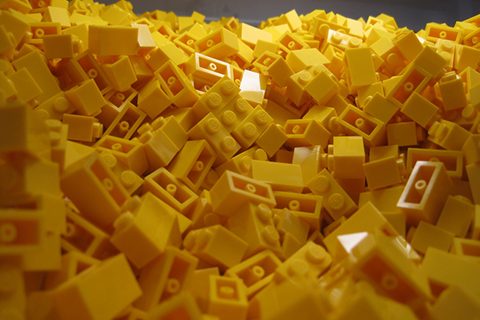
By Michael Lau, Senior Operational Safety Manager, A2SEA
It’s commonly said that the only difference between men and boys is the size of their toys. So it may seem completely backwards to have a room of fully grown offshore wind people playing with tiny LEGO block models to help coordinate the installation of some of the biggest ‘toys’ in the world: offshore wind turbines. Strange, perhaps, but it’s clearly an innovative approach that, in its own small way, can contribute to lowering the levelised cost of energy (LCoE).
You see, I recently had the pleasure of being invited, along with 44 other industry colleagues, to a workshop arranged by Siemens Wind Power for the Race Bank project (owned by DONG Energy). The idea was to gather all the project participants for two days to go through the various processes of pre-planning, load-out, installation and finalising. A2SEA was there with our Race Bank project manager, two site managers, the vessel master and me as the safety representative.
To begin with, we were asked to create small LEGO models of ourselves to show the other participants our role. My own masterpiece was a guy on a ship’s bridge wearing a hard hat, symbolising working with the client, contractors and the vessel at the same time. And I added a flag pole with different flags to indicate the different laws I need to work within. Other participants applied their own brand of creativity, adding sharks, for example.
Hard play
That part of the workshop was comparatively easy. Next, however, we broke into smaller groups to discuss topics such as installation and documentation, permits, local content laws and other legislation. Then we presented the communication lines and documentation flows associated with our topics in LEGO – a challenging task when you’re not used to working with small, rectangular pieces of plastic as your sole tool! But it was a fresh approach that kept things open and relaxed, which is the best atmosphere for free-flowing communication.
Our group provided a visual model of the way we saw the world from contract pre-planning to the point at which loading starts. Then everyone could ask questions of the groups, which worked surprisingly well considering how many people we were. And it quickly became clear that there were different niche areas in the room – with different levels of experience, too.
Key take-outs
LEGO-building aside, how was a workshop like this useful? Two things, in particular, come to mind: First, as a general knowledge-sharing forum. For example, it provided a lot of good insights for those who work in back-office functions. They were able to hear first-hand about the issues typically faced by those working out at sea. And because all offshore wind projects are handed through the phases by several teams, this was a chance for everyone in the room to say “Where does this actually go when we put it on your desk? What happens to it?”
Fewer surprises
I have to admit, of course, that for the most experienced participants, there was quite a bit of idle time. But nevertheless, it was worth the time spent. And that’s because of the second thing: This is a great way to pick up potential or real issues that may have been missed during earlier planning processes.
Workshops like these always uncover something useful – and this particular adventure in toyland was no exception. In our case, we were able to identify a crew vessel logistics issue some three months before the project started. It was addressed during the workshop, a solution was found and a potential delay was thus avoided.
Like this post? Subscribe now and get notified about new content!